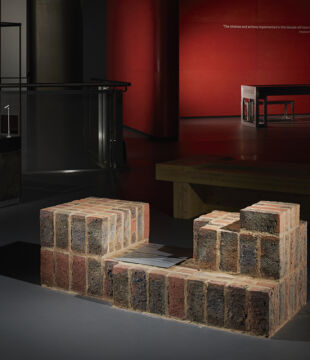
Details
Location: Haywards Heath, West Sussex
Brick Manufacturer: Michelmersh Brick Holdings PLC
Brick Name: Handmades from Freshfield Lane
Architect: John Rastrick and David Moccata
Brickwork Contractor: AW Group
About the project
The Ouse Valley Viaduct is located in West Sussex, England and is locally know as the Balcombe Viaduct. Known for its ornate design, the structure has been described as ”probably the most elegant viaduct in Britain.” It was completed in 1842 to serve the London to Brighton rail main line, carrying a two track railway across a valley and the River Ouse. It still carries around 110 trains a day.
The viaduct consists of 37 circular brick arches and pierced piers. It is 450 metres long and 28m high, as well as being a grade 2 listed building. The majority of the structure was designed by experienced Railway Engineer John Rastrick, who with his partner built only the third steam locomotive to be made in the world. Other aspects of the viaduct, such as the ornamental parapets and pavilions are credited to architect David Moccata.
During construction the 11 million bricks and limestone, for the parapets and pavilions, were used and throughout its life there have been many restorations to the viaduct. One of the most recent was a £6.5million operation between 1996 and 1999 by Railtrack, which has since been taken over by Network Rail. This restoration replaced the severely weathered limestone parapets and also repaired the brickwork of the arches and piers. Over recent decades bricks have been supplied by multiple manufacturers but most notably from local manufacturer Freshfield Lane of Michelmersh for sustainability reasons and to keep the brick supply local. Using handmade bricks to compliment the range of tones and structural characteristics required by the ongoing repairs to the piers.
The arches in this structure are multi-ring brickwork construction. Each ring was originally bonded to the adjacent rings to ensure that the arch acts as one structural element and the rings act collectively. However stresses in the mortar between these rings can cause delamination to occur and this phenomenon known as ‘ring-separation’. This mode of failure is very common for structures of this type and can significantly reduce its carrying capacity. This has been seen to occur both in the main arches and piercings of the piers, which led to a continuous programme of repair works to be carried out to maintain the structure’s integrity, extend its operational life, and restore its appearance to better resemble its original state.
The structure has already outlived a design life of 120 years, so modifications and improvements are expected. The structural system is simple and clearly expressed through multiple masonry brick arches and pierced piers which transfer the loads down into the foundations and are one of the earliest and simplest forms of construction, dating back to before Christ, but it was the Romans who were the first to realise the potential of this form of construction. This structure which has stood for over 180 years is an example of clay brick durability, strength, stability and beauty.
Please watch youtube clip, ITV news feature on the restoration: https://youtu.be/OnxN85vyuMs
Sponsored by Northcot Brick

















